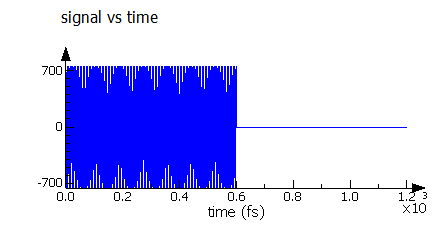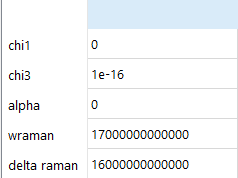-
-
November 10, 2023 at 3:24 pm
Ahmed Salama
SubscriberHi, I am using lumerical FDTD. I need to find the relation between input intenisty and output field for a raman/kerr model. I used the script from Ring resonator - optical bistability to show the relation between input and output, but the following figure appear.
This figure is not making sense becasue the output is greater than the input. I am using a single intensity (0.5e14 W/m^2) and this is the source
I am using also single wavelength of 1550 nm
and this is the material definition
-
January 9, 2024 at 9:18 pm
Taylor Robertson
Ansys EmployeeHello,
The E-field input amplitude is usually set to 1, so that you can then multiply by your actual peak amplitude afterwards. In the time monitors we further normalize Understanding frequency domain CW normalization.
I am not sure I quite understand the issue. In the example you shared the plots are normalized by the source. You also have an odd time spectrum looks like shuttered CW pulse? Since this is a nonlinear example the time signal is important. I would look at the Nonlinear and gain methodology. The geometry can squeeze the pulse temporally or geometrically resulting in higer peak amplitudes and that doesn't imply conservation of energy is broken.
Best,
-
- The topic ‘Output field is greater than input field in Raman/kerr material model’ is closed to new replies.



-
3467
-
1057
-
1051
-
929
-
896

© 2025 Copyright ANSYS, Inc. All rights reserved.









